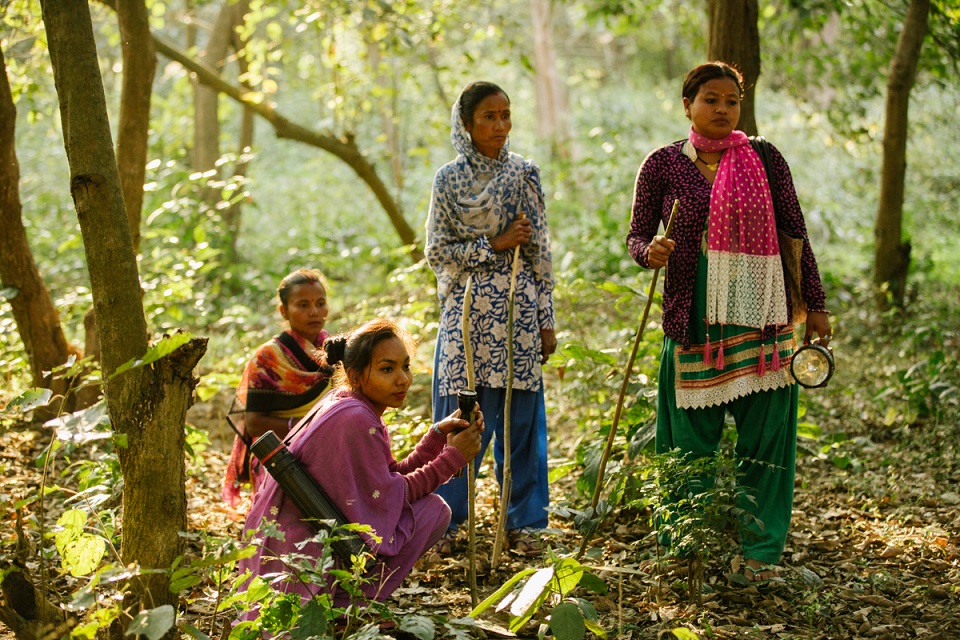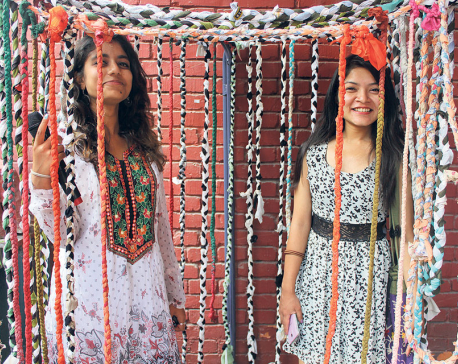
OR


Bharat Gotame
The author is the Program Manager of Terai Arc Landscape at WWF Nepalnews@myrepublica.com
More from Author
While adhering to lockdown rules, community youth in Tarai are keeping their eyes and ears open to safeguard wildlife and people in their surroundings.
Despite only claiming less than 0.1 percent of the earth’s landmass, Nepal is filled with lessons when it comes to conservation. With 45 percent of Nepal covered under green canopies, we’ve risen well above the global average forest coverage, which was at 30 percent in 2018. And while only 11.6 percent of earth’s terrestrial surface is covered by protected areas, 24 percent of Nepal is under the Government’s Protected Area Network. As we celebrate National Wildlife Week from 13-19 April, let's not forget the underlying fabric for Nepal’s success in conservation: communities.
A key driving force behind these numbers is local people—especially those who live alongside park peripheries (buffer zones) and among wildlife. In the current crisis situation, these communities are also projected to be among the hardest hit by COVID-19’s consequences—both in terms of health and economic loss.
This comes at a time when the media has displayed a renewed interest in covering conservation and wildlife protection, likely as a result of COVID-19 origins to wildlife consumption and wet markets. In the past two weeks, media reports have indicated increasing threats to wildlife and biodiversity. Meanwhile, historical trends indicate that poaching and illegal wildlife crimes tend to see an uptick during periods of social and economic crisis. Given the economic downturn, the pandemic has put immense pressure on Nepal’s natural resources, but the communities of Tarai have kept their involvement and resilience in spite of the odds.
With Nepal’s transition to a federal structure, local governments and community groups hold the influence in terms of mainstreaming sustainable practices at local levels. Take for example the Baghkhor village in Nawalparasi. Just a decade ago, achieving an environmentally balanced, socially equitable and economically viable society was perceived as a short-term challenge for the people of this community. More than 200 households live in close vicinity of Chitwan National Park and its buffer zone in Baghkhor—and communities rely heavily on the forest and nearby river for their daily needs. With limited livelihood options, they first started out by protecting the nearby forests. As the forests regenerated, so did their economy. With the forests providing refuge to tigers and rhinos, opportunities for tourism arose and with it came about community-based homestay programs, bringing development and prosperity to local communities, while also uplifting their income status.
Homestay businesses proved to be a good source of income for more than 60 households where 30 households operate homestay and remaining with associated businesses to provide homestay products like local handicrafts, organic foods and nature guides. It directly contributes to earning $300 per month additional profit per household. In the last decade, they have also succeeded in fully controlling illegal wildlife crime-resulting in zero poachings of wildlife in their area-while also reducing their forest dependency. Another instance of resilience and community stewardship was when they made significant investments in improving their homestay accommodation facilities, community infrastructure to highlight their traditional cultures in preparation for Visit Nepal 2020. In the process, they not only upgraded their local economies but also adopted more inclusive social practices.
Such community-based organizations across the Tarai Arc Landscape have facilitated the establishment of 32 cooperatives, increasing access to microfinance for locals unable to access mainstream banking services. With a revolving fund of more than USD 1.7 million, WWF Nepal’s Tarai Arc Landscape Program has helped some of the most marginal households and rural communities, becoming instrumental in strengthening the capacity and resilience of local individual households, community institutions, and local economies.
It is also no surprise that youth leaders and mentors have emerged as local change agents in the current country lockdown scenario. For instance, following school level environmental and biodiversity awareness programs, young individuals are voluntarily raising awareness among other locals as well as among their families and neighbors on possible circles of wildlife poaching in their settlements and villages. Over 5000 local youth are engaged voluntarily as members of Community-Based Anti-Poaching Units, Rapid Response Teams, or as Citizen Scientists in the Tarai Arc Landscape, working with far-reaching responsibilities-from local sensitization, to helping resolve the human-wildlife conflict by connecting victims to government compensation mechanisms and even contributing to conservation data and science. While adhering to lockdown rules, community youth are keeping their eyes and ears open to safeguard wildlife and people in their surroundings.
The long-term commitments of the Government of Nepal have played a major role in securing conservation milestones; but equal and deserved credit should also be given to the communities who often live in close quarters to the natural environment, and are actively engaged in protecting it—be it community forestry initiatives, awareness building and even maintenance of information-sharing mechanisms to curb illegal actions. Communities continue to remain at the forefront of conservation, during this lockdown period; in particular their role in keeping local information networks on illegal actions such as poaching and wildlife crimes active, which will be crucial in equipping enforcement agencies with the required knowledge and enabling appropriate action.
As a globally recognized conservation model, Nepal is presented with yet another opportunity to showcase adaptive management in the protection of its wildlife and biodiversity. Amidst this crisis, effective communication between conservation authorities, local governing bodies, communities, and partners could significantly help strengthen local and trans-border vigilance on wildlife crimes and protect the shared spaces for humans and wildlife.
History shows that sooner or later, we will overcome this pandemic. A huge impact on the economy, society and people is already estimated but what about nature? What about our natural resources and environmental services? Communities could once again be a tremendous supporter in rebuilding our natural reserves. As a collective, we must all recognize the collective potential of communities at the grassroots. The need of the hour could not be overstated: Governments and conservation partners like WWF must continue supporting and encouraging communities and youth to manage and someday overcome this current crisis.
The author is the Program Manager of Terai Arc Landscape at WWF Nepal
You May Like This

Community school teachers must admit their children in community schools
SYANGJA, April 10: The Chapakot Municipality in Syangja district has decided not to release the salaries of community schools' teachers... Read More...

Global community lauds Nepal's efforts in tiger conservation
KATHMANDU, Feb 28: At a time when wildlife conservationists worldwide are expressing serious concerns over the declining habitats of tiger population,... Read More...

Art for community, with community
KATHMANDU: Art exhibition, created during Community Art workshop ‘Rebuilding Recaptured’ held at Sindhupalchowk, was organized on Saturday at NexUs Culture... Read More...




Just In
- Govt receives 1,658 proposals for startup loans; Minimum of 50 points required for eligibility
- Unified Socialist leader Sodari appointed Sudurpaschim CM
- One Nepali dies in UAE flood
- Madhesh Province CM Yadav expands cabinet
- 12-hour OPD service at Damauli Hospital from Thursday
- Lawmaker Dr Sharma provides Rs 2 million to children's hospital
- BFIs' lending to private sector increases by only 4.3 percent to Rs 5.087 trillion in first eight months of current FY
- NEPSE nosedives 19.56 points; daily turnover falls to Rs 2.09 billion















Leave A Comment